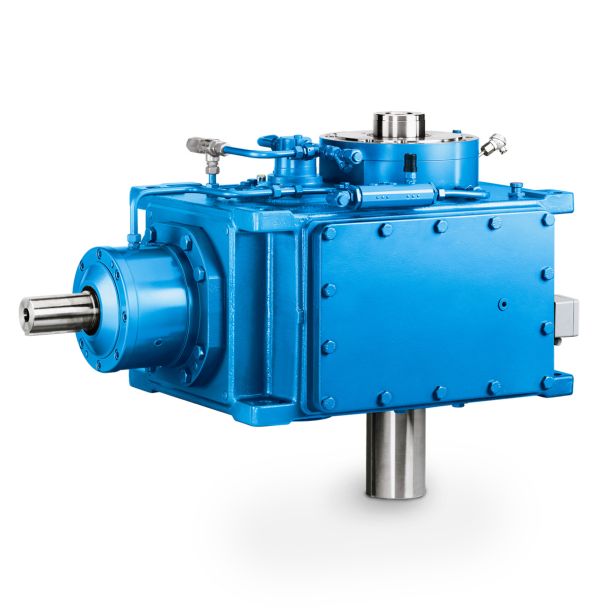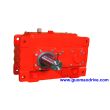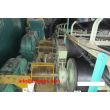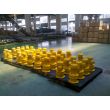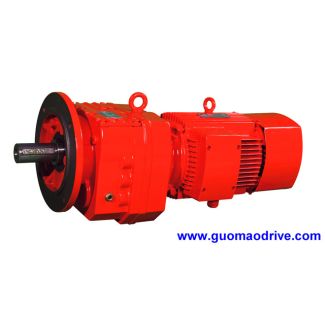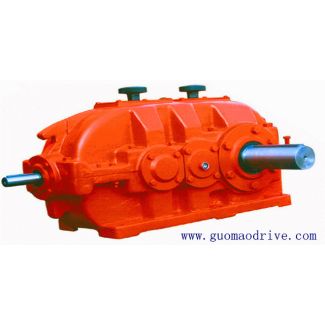o LP Z Water screw design Water screw B4VH-27-C Bevel-helical speed reduction gearboxes B4
In stock
SKU
B4VH-27-C
$492,857.14
Flender/Flender Gear Units/Bevel-helical speed reduction gearboxes B4
ta proceeds either from the given geometry parameters or from those selected on the basis of load capacity consid-erations (see Sect. 3.. Depending on the chosen method, geometry parameters include the shaft angle , hypoid offset , number of teeth
Sect. 3.. Depending on the chosen method, geometry parameters include the shaft angle , hypoid offset , number of teeth  of the pinion and wheel 1/2, mean or the outer pitch diameter of the wheel m2or e2, spiral angle of
of the pinion and wheel 1/2, mean or the outer pitch diameter of the wheel m2or e2, spiral angle of  the pinion or wheel m1/2, tool radius c0and, if necessary, number of blade groups 0in the tool. The parameters for
the pinion or wheel m1/2, tool radius c0and, if necessary, number of blade groups 0in the tool. The parameters for  the pitch cones of the pinion and wheel are calculatedon the basis of these inputs, allowing the schematic of hypoid gear pair to beconstructed as shown in Fig. 2.1. The equations used to calculate bevel gear geometry without offset have closed solution, .. complete geometry calcula-tion is also possible on the basis of other geometry data. In both cases, closed solution of the remaining gear dimensions is possible using the pitch cone parameters. The necessary additional geometry inputs can be made according to the factor system typically employed in Europe (data type ) orthe AGMA system (data type ). The appropriate factors may be converted one tothe other, allowing their use in describing the same gear dimensions. Both methods for the determination of the pitch cone parameters and the different data types to calculate the remaining gear dimensions can be, in principle, combinedindependently of each other, irrespectively of the gear manufacturing process employed.3 2 Fundamentals of Bevel Gears 2.3.2 Calculation of Pitch Cone Parameters Input data The following sections describe one method to calculate non-offset bevel gears and one method to calculate hypoid gears. Other methods may be consulted inISO 2. Table 2.5compiles the necessary input data. These inputs must be selected in such way that they result in gear with the necessary load capacity (see Sect. 3.. The formulae described below yield the pitch cone parameters m1,Rm2,1,2, m1,m2andcbe2. Parameter cbe2, the face width factor, describes
the pitch cones of the pinion and wheel are calculatedon the basis of these inputs, allowing the schematic of hypoid gear pair to beconstructed as shown in Fig. 2.1. The equations used to calculate bevel gear geometry without offset have closed solution, .. complete geometry calcula-tion is also possible on the basis of other geometry data. In both cases, closed solution of the remaining gear dimensions is possible using the pitch cone parameters. The necessary additional geometry inputs can be made according to the factor system typically employed in Europe (data type ) orthe AGMA system (data type ). The appropriate factors may be converted one tothe other, allowing their use in describing the same gear dimensions. Both methods for the determination of the pitch cone parameters and the different data types to calculate the remaining gear dimensions can be, in principle, combinedindependently of each other, irrespectively of the gear manufacturing process employed.3 2 Fundamentals of Bevel Gears 2.3.2 Calculation of Pitch Cone Parameters Input data The following sections describe one method to calculate non-offset bevel gears and one method to calculate hypoid gears. Other methods may be consulted inISO 2. Table 2.5compiles the necessary input data. These inputs must be selected in such way that they result in gear with the necessary load capacity (see Sect. 3.. The formulae described below yield the pitch cone parameters m1,Rm2,1,2, m1,m2andcbe2. Parameter cbe2, the face width factor, describes| Model Type | Bevel-helical speed reduction gearboxes B4 |
|---|---|
| Gear Type | Bevel Helical Gear |
| Weight (kg) | 23000.000000 |
| Ratio Range | 1 : 80…315 |
| Low Speed Output | Solid shaft with parallel key acc. to DIN 6885/1 with reinforced spigot |
| Nominal Torque | 1230000 Nm |
| Mounting Arrangements | Horizontal mounting position |
| Manufacturer | Beijing Flender |
| Country of Manufacture | Barbados |
| Data Sheet & Drawings | o LP Z Water screw design Water screw B4VH-27-C Bevel-helical speed reduction gearboxes B4 |
